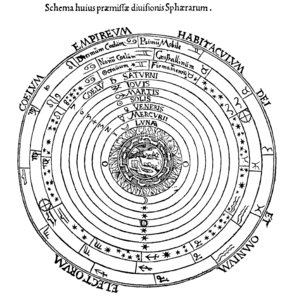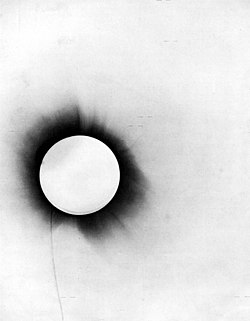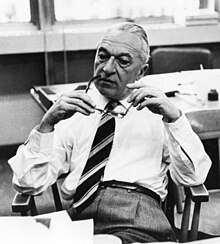Portal:History of science
The History of Science Portal
The history of science covers the development of science from ancient times to the present. It encompasses all three major branches of science: natural, social, and formal. Protoscience, early sciences, and natural philosophies such as alchemy and astrology during the Bronze Age, Iron Age, classical antiquity, and the Middle Ages declined during the early modern period after the establishment of formal disciplines of science in the Age of Enlightenment.
Science's earliest roots can be traced to Ancient Egypt and Mesopotamia around 3000 to 1200 BCE. These civilizations' contributions to mathematics, astronomy, and medicine influenced later Greek natural philosophy of classical antiquity, wherein formal attempts were made to provide explanations of events in the physical world based on natural causes. After the fall of the Western Roman Empire, knowledge of Greek conceptions of the world deteriorated in Latin-speaking Western Europe during the early centuries (400 to 1000 CE) of the Middle Ages, but continued to thrive in the Greek-speaking Byzantine Empire. Aided by translations of Greek texts, the Hellenistic worldview was preserved and absorbed into the Arabic-speaking Muslim world during the Islamic Golden Age. The recovery and assimilation of Greek works and Islamic inquiries into Western Europe from the 10th to 13th century revived the learning of natural philosophy in the West. Traditions of early science were also developed in ancient India and separately in ancient China, the Chinese model having influenced Vietnam, Korea and Japan before Western exploration. Among the Pre-Columbian peoples of Mesoamerica, the Zapotec civilization established their first known traditions of astronomy and mathematics for producing calendars, followed by other civilizations such as the Maya.
Natural philosophy was transformed during the Scientific Revolution in 16th- to 17th-century Europe, as new ideas and discoveries departed from previous Greek conceptions and traditions. The New Science that emerged was more mechanistic in its worldview, more integrated with mathematics, and more reliable and open as its knowledge was based on a newly defined scientific method. More "revolutions" in subsequent centuries soon followed. The chemical revolution of the 18th century, for instance, introduced new quantitative methods and measurements for chemistry. In the 19th century, new perspectives regarding the conservation of energy, age of Earth, and evolution came into focus. And in the 20th century, new discoveries in genetics and physics laid the foundations for new sub disciplines such as molecular biology and particle physics. Moreover, industrial and military concerns as well as the increasing complexity of new research endeavors ushered in the era of "big science," particularly after World War II. (Full article...)
Selected article -

The celestial spheres, or celestial orbs, were the fundamental entities of the cosmological models developed by Plato, Eudoxus, Aristotle, Ptolemy, Copernicus, and others. In these celestial models, the apparent motions of the fixed stars and planets are accounted for by treating them as embedded in rotating spheres made of an aetherial, transparent fifth element (quintessence), like gems set in orbs. Since it was believed that the fixed stars did not change their positions relative to one another, it was argued that they must be on the surface of a single starry sphere.
In modern thought, the orbits of the planets are viewed as the paths of those planets through mostly empty space. Ancient and medieval thinkers, however, considered the celestial orbs to be thick spheres of rarefied matter nested one within the other, each one in complete contact with the sphere above it and the sphere below. When scholars applied Ptolemy's epicycles, they presumed that each planetary sphere was exactly thick enough to accommodate them. By combining this nested sphere model with astronomical observations, scholars calculated what became generally accepted values at the time for the distances to the Sun: about 4 million miles (6.4 million kilometres), to the other planets, and to the edge of the universe: about 73 million miles (117 million kilometres). The nested sphere model's distances to the Sun and planets differ significantly from modern measurements of the distances, and the size of the universe is now known to be inconceivably large and continuously expanding. (Full article...)Selected image

During the solar eclipse of May 29, 1919, several teams of scientists attempted to verify Einstein's prediction of the bending of light around the sun using photographic measurements. This negative, taken from Arthur Eddington's report of the expedition to the African island Príncipe, was presented as part of a successful test of general relativity, based on the positions of stars near the eclipsed sun. The original caption reads:
- In Plate 1 is given a half-tone reproduction of one of the negatives taken with the 4-inch lens at Sobral. This shows the position of the stars, and, as far as possible in a reproduction of this kind, the character of the images, as there has been no retouching. A number of photographic prints have been made and applications for these from astronomers, who wish to assure themselves of the quality of the photographs, will be considered as as far as possible acceded to.
Did you know
...that Einstein's famous letter to FDR about the possibility of an atomic bomb was actually written by Leó Szilárd?
...that geology was transformed in the latter part of the 20th century after widespread acceptance of plate tectonics?
...that the idea of biological evolution dates to the ancient world?
Selected Biography -

Bruno Benedetto Rossi (/ˈrɒsi/; Italian: [ˈrossi]; 13 April 1905 – 21 November 1993) was an Italian experimental physicist. He made major contributions to particle physics and the study of cosmic rays. A 1927 graduate of the University of Bologna, he became interested in cosmic rays. To study them, he invented an improved electronic coincidence circuit, and travelled to Eritrea to conduct experiments that showed that cosmic ray intensity from the West was significantly larger than that from the East.
Forced to emigrate in October 1938 due to the Italian racial laws, Rossi moved to Denmark, where he worked with Niels Bohr. He then moved to Britain, where he worked with Patrick Blackett at the University of Manchester. Finally he went to the United States, where he worked with Enrico Fermi at the University of Chicago, and later at Cornell University. Rossi stayed in the United States, and became an American Citizen. (Full article...)Selected anniversaries
- 585 BC - A solar eclipse occurs, as predicted by Thales, while Alyattes is battling Cyaxares in the Battle of the Eclipse, leading to a truce. This is one of the cardinal dates on which systems of chronology can be calculated.
- 1641 - Birth of Janez Vajkard Valvasor, Slovenian polymath (d. 1693)
- 1676 - Birth of Jacopo Riccati, Italian mathematician (d. 1754)
- 1807 - Birth of Louis Agassiz, Swiss-American zoologist and geologist (d. 1873)
- 1836 - Birth of Alexander Mitscherlich, German chemist (d. 1918)
- 1872 - Birth of Marian Smoluchowski, Polish physicist (d. 1917)
- 1892 - In San Francisco, California, John Muir organizes the Sierra Club.
- 1936 - Alan Turing submits On Computable Numbers for publication.
- 1942 - Birth of Stanley B. Prusiner, American neurologist and Nobel Prize laureate
- 1980 - Death of Rolf Nevanlinna, Finnish mathematician (b. 1895)
- 2001 - Death of Francisco Varela, Chilean biologist and philosopher (b. 1946)
- 2003 - Death of Ilya Prigogine, Russian-Belgian physicist and chemist and Nobel Prize laureate (b. 1917)
Related portals
Topics
General images
Subcategories
Things you can do
Help out by participating in the History of Science Wikiproject (which also coordinates the histories of medicine, technology and philosophy of science) or join the discussion.
Associated Wikimedia
The following Wikimedia Foundation sister projects provide more on this subject:
-
Commons
Free media repository -
Wikibooks
Free textbooks and manuals -
Wikidata
Free knowledge base -
Wikinews
Free-content news -
Wikiquote
Collection of quotations -
Wikisource
Free-content library -
Wikiversity
Free learning tools -
Wiktionary
Dictionary and thesaurus








































































